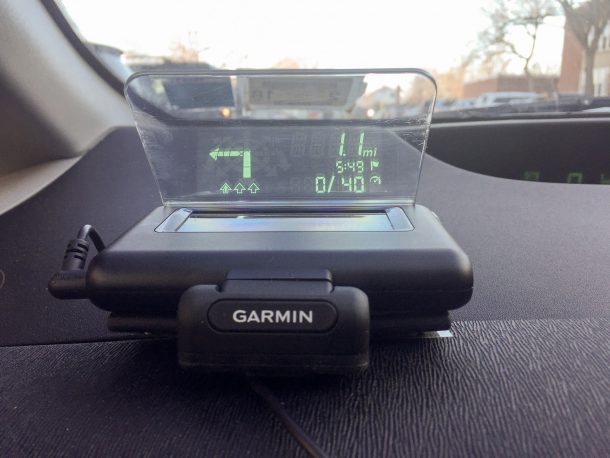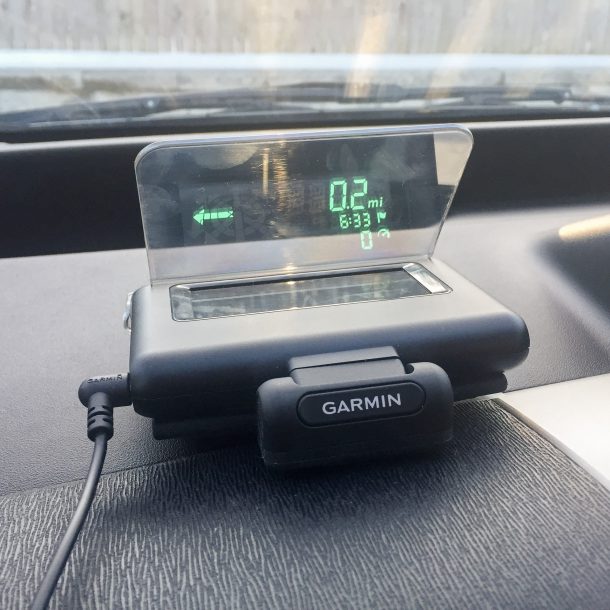A windshield head-up display, or HUD, is a beautiful thing.
Capable of displaying navigational guidance, vehicle speed, and other information on the lower part of the windshield and in the driver’s line of sight, HUD systems have become increasingly common on new cars since their first appearance a couple of decades ago.
More recently, a handful of aftermarket suppliers and startups have gotten on the bandwagon, offering devices that pair with a smartphone via Bluetooth to provide similar functionality, even if these devices lack the seamless integration of a factory system.
For openers, aftermarket HUDs use a small unit that sits on top of your dash that either projects information on the windshield or onto a small, built-in screen. While having to look at what’s obviously an added accessory on the dash is not necessarily a big deal, some drivers might not care to have an expensive and easily removed unit out in the open. Others many not enjoy the homebrew aesthetics of a power cord snaking over the dash to a power outlet.
For this report, we looked at the Garmin HUD+. Neither the most full featured, expensive unit available nor the cheapest, it is — at least — made by an established company known for some of the better aftermarket navigation systems on the market.
Available from eBay for just under $100, the Garmin HUD+ is yet another example of why it’s important to shop around when buying electronic devices. Prices vary, and by a lot. Whatever you pay, you’ll get the dash top unit/projector, a 12V power cord, a 4”X4” self-adhesive clear projection patch for the windshield, and a smaller, 3 3/4” X 2 1/2” screen that clips to the unit if you prefer not to permanently attach anything to your windshield. The latter option can be advantageous if you plan to use the unit in more than one vehicle.
To use the HUD+ , you first must download the companion app from either the Apple or Android app store, and then set yourself up with some maps. The process took a while on my iPhone 6, mostly because I had to clear out a bunch of old photos to make room for the 1.32 GB of storage space needed for North American maps. That’s a fair chunk of real estate, at least for my 12 GB phone.
Next, you must pair the phone with the HUD+ , which is a straightforward and quick process. That’s a good thing, because the instructions say this is necessary once a month in order to have access to maps.
Because the 18-year-old Acura that inspired this series is currently under the weather and in the shop, I installed the HUD+ in a friend’s 10-year-old Prius. And by installed, I mean I put it on the dash, plugged it in, and used the smaller snap-on screen rather that sticking anything to the windshield of a borrowed car. I also avoided peeling the protective cover off the self-adhesive, flexible pad that attaches the unit to the dash top to avoid any potential damage or sticky residue that might preclude further car loans if needed.
Once installed, it’s a simple matter of firing up the Garmin app on your phone, and entering an address or point of interest as you would with any navigation device. The screen and controls will look familiar to anyone who has used Garmin navigation, and is just as straightforward and easy to use. The full map display remains visible on your phone as you travel, while the HUD provides just the basics — distance to the next turn and whether it is to the right or left, estimated time of arrival, vehicle speed, and the posted speed limit where such data is available.
Other aftermarket HUDs, such as one from startup NAVDY, provide more features such as hands-free phone calls, caller ID, and text messaging, but cost twice as much as the Garmin or more. It’s just a question of figuring out the right balance of features and price for your needs.










